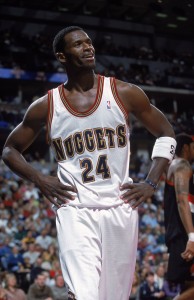While the majority of players on NBA rosters currently have fully guaranteed salaries for the 2017/18 season, there are many whose contracts are still non-guaranteed or only have a partial guarantee. We published a post last week dedicated to keeping tabs on those non-guaranteed players, sorting them by team.
By default, NBA contracts all become fully guaranteed on January 10 every year, meaning that a team must waive a non-guaranteed player by the end of the business day on January 7 to ensure he clears waivers before January 10. That way, his full-season salary won’t count against that team’s cap.
However, many players with non-guaranteed salaries have language in their contracts that ensures their guarantee deadline arrives early. We saw that over the summer, as many players with guarantee dates in June, July, or August were either waived in advance of those deadlines or had their 2017/18 salaries become guaranteed.
There are many more players with guarantee dates due in the coming weeks or months, so we’ll use the space below to track those deadlines and decisions. When a deadline date passes, we’ll note below if that player was waived. If he remained on the roster, receiving his guarantee, that’s noted with a ✔️ symbol.
We’re relying on salary information from Eric Pincus of Basketball Insiders and Bobby Marks of ESPN, who each do an outstanding job of providing detailed contract info. However, there are a handful of discrepancies between the details they’ve provided, so we’ve noted those cases below — we’ll consider those details tentative for now.
Here’s the full upcoming salary guarantee calendar:
September 15
- Eric Moreland (Pistons): Guarantee increases from $500,000 to $750,000. (✔️)
September 26
- Shawn Long (Rockets): Guarantee increases from $0 to $50,000. (Waived)
- Chasson Randle (Knicks): Guarantee increases from $0 to $50,000. (Waived)
October 15
- Semaj Christon (Thunder): Guarantee increases from $0 to $1,312,611 (fully guaranteed). (Waived)
- Gary Payton II (Bucks): Guarantee increases from $100K to $1,312,611 (fully guaranteed). (Waived)
October 16
- Troy Williams (Rockets): Guarantee increases from $1,312,611 to $1,471,382 (fully guaranteed). (✔️)
October 17
- Quinn Cook (Hawks): Guarantee increases from $100,000 to $600,000. (Waived)
- Dorian Finney-Smith (Mavericks): Guarantee increases to $150,000. (✔️)
- Isaiah Taylor (Rockets): Guarantee increases from $0 to $1,312,611 (fully guaranteed). (Waived)
October 18
- Khem Birch (Magic): Guarantee increases from $25,000 to $407,808. (✔️)
- Mario Chalmers (Grizzlies): Guarantee increases from $25,000 to $2,106,470 (fully guaranteed). (✔️)
- Note: Chalmers’ fully guaranteed salary will count for $1,471,382 against cap.
- Marcus Georges-Hunt (Timberwolves): Guarantee increases from $0 to $275,000. (✔️)
- Rodney McGruder (Heat): Guarantee increases from $452,625 to $1,312,611 (fully guaranteed). (✔️)
- Eric Moreland (Pistons): Guarantee increases from $750,000 to $1,000,000. (✔️)
- Okaro White (Heat): Guarantee increases from $452,624 to $1,312,611 (fully guaranteed). (✔️)
October 19
- Diamond Stone (Bulls): Guarantee increases from $50,000 to $350,000. (Waived)
October 31
- Spencer Dinwiddie (Nets): Guarantee increases from $50,000 to $250,000. (✔️)
November 10
- Jordan Crawford (Pelicans): Guarantee increases from $250,000 to $750,000. (Waived)
- Note: Based on Marks’ data. Pincus had Crawford’s guarantee increasing from $250,000 to $500,000.
December 5
- Dorian Finney-Smith (Mavericks): Guarantee increases from $150,000 to $200,000. (✔️)
December 15
- Luke Babbitt (Hawks): Guarantee increases from $987,080 to $1,974,159 (fully guaranteed). (✔️)
- Note: Babbitt’s fully guaranteed salary will count for $1,471,382 against cap.
January 7
- All non-guaranteed contracts become guaranteed if not waived on this day. (✔️)
Contract information from Basketball Insiders and ESPN was used in the creation of this post.

